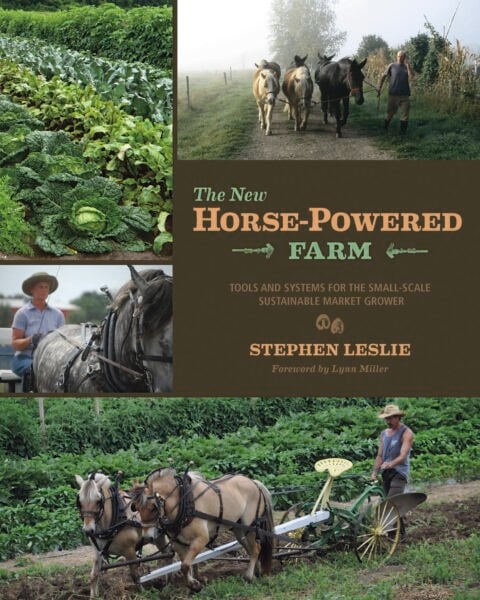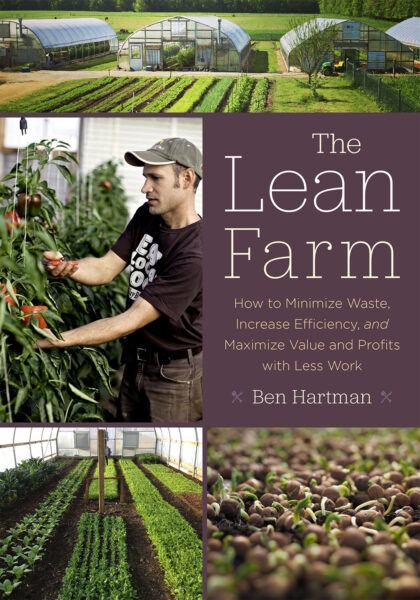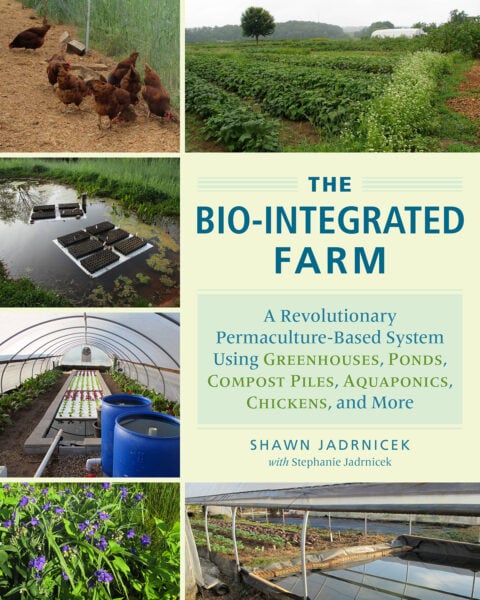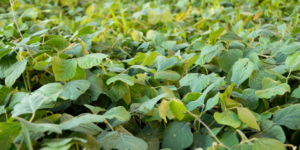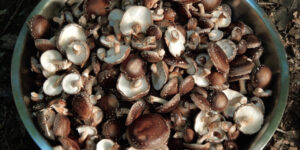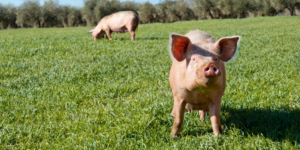Why Farm Infrastructure is Important: A Farm is More Than Land
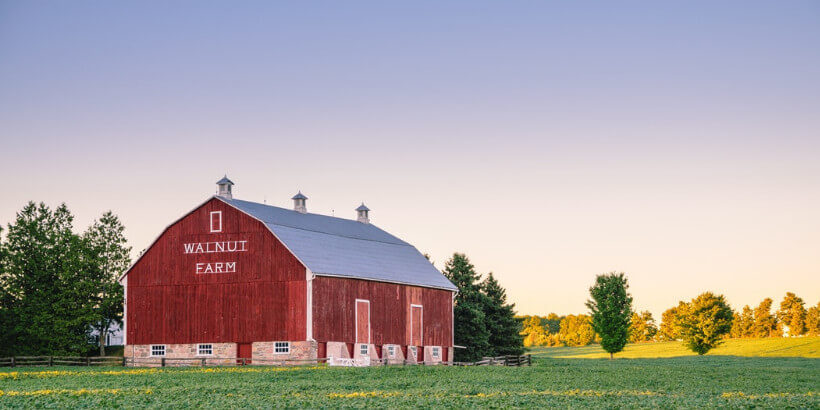
The basis for a good farm isn’t just about finding a piece of land with great soil. No, to truly succeed on the farm you need a well-planned and implemented infrastructure coupled with hard work, dedication, and will-power.
As farming practices continue to change, it’s important for the next generation to remember that insight and work to build farms that will withstand whatever the future has in store.
The following excerpt is from Fruitful Labor by Mike Madison. It has been adapted for the web.
When I purchased my farm, it had no buildings, no well, and no electricity, and the access road was a seasonal dirt farm road. A 12-inch-diameter pipeline in one corner was meant to bring irrigation water from a distant well; however, that well, a very old one, failed during the first year with a collapsed casing and was abandoned.
A farm needs more than just good soil to carry out its mission. The requirements include all-weather roads, buildings for secure storage of supplies and equipment; packing facilities for preparing crops for market; greenhouses for starting seedlings; cool storage; electricity for light, power, and pumping water; wells to provide a source of water; and pipelines to distribute the water to where it is needed. A good deal of my energy and resources was devoted to developing the necessary farm infrastructure, especially in the early years.
Roads
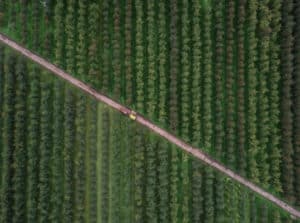 The first requirement was a reliable road, and not having the suitable equipment, I hired that work done. The roadway was elevated and crowned with soil taken from adjacent barrow pits, and then covered with gravel (road base). Most of the gravel was mined locally, but some was asphalt grindings from nearby highway repair, and another portion was one-inch granite rock salvaged from an abandoned rail bed.
The first requirement was a reliable road, and not having the suitable equipment, I hired that work done. The roadway was elevated and crowned with soil taken from adjacent barrow pits, and then covered with gravel (road base). Most of the gravel was mined locally, but some was asphalt grindings from nearby highway repair, and another portion was one-inch granite rock salvaged from an abandoned rail bed.
The graveled roads on the farm amount to about 1,600 linear feet, which required about 100 tons of gravel initially, and another 70 tons in maintenance over the years. In addition, there is three-quarters of a mile of common driveway shared with neighbors that was built at the same time, and which cumulatively has required several hundred tons of rock. Concrete used on the farm for the foundations of buildings, and which is mostly sand and gravel, amounts to another 110 tons.
Like all mining, gravel mining is not benign—it is a messy, destructive business harmful to both landscapes and waterways. In evaluating the ecological effects of a farming operation, gravel mined elsewhere constitutes a significant environmental cost. But in the case of roads and foundations, I have no good alternatives.
Buildings
I had worked in the building trades for years before becoming a farmer, and so I had the necessary skills—plumber, electrician, framer, roofer, cabinetmaker, plasterer—to build my own buildings without help. I am not a master of any of those trades, but I can do them adequately for my purposes. My wife, Dianne, was formerly an architectural draftsman; she has a very good eye, and the buildings are not shacks—they are handsome and functional. The greatest part of the cost of construction is labor, and by building with my own labor I was able to get useful buildings very inexpensively. The buildings, constructed over a period of years, are the house, studio, workshop, barn, greenhouse, packing and processing building, and guest house.
But it was not only labor where I was cutting expenses. Much of the construction used recycled materials. Although I had quite a bit of salvaged wood at the outset, it was not enough, and so I placed an ad in the newspaper offering to buy abandoned barns for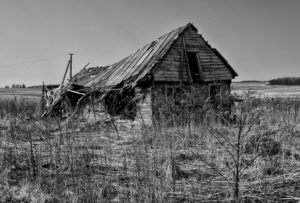 salvage. A man called me up and offered a tumbling-down barn, which I bought for $100, and which provided me with thousands of feet of good lumber. Somehow, because of that, I began to develop a reputation as a person who dismantles old buildings, and people would seek me out, offering various old buildings that they wanted removed. For many years, I would take apart old buildings in the winter months when farm work was slow, and I would keep some lumber for myself, and sell the rest. The quality of lumber in 19th-century buildings of this region is remarkable; virgin timber was being cut, and sold cheaply, and used thoughtlessly. Some of the best salvage was too good for framing—I ended up building cabinets and furniture from it.
salvage. A man called me up and offered a tumbling-down barn, which I bought for $100, and which provided me with thousands of feet of good lumber. Somehow, because of that, I began to develop a reputation as a person who dismantles old buildings, and people would seek me out, offering various old buildings that they wanted removed. For many years, I would take apart old buildings in the winter months when farm work was slow, and I would keep some lumber for myself, and sell the rest. The quality of lumber in 19th-century buildings of this region is remarkable; virgin timber was being cut, and sold cheaply, and used thoughtlessly. Some of the best salvage was too good for framing—I ended up building cabinets and furniture from it.
Another good source of salvage material came from roofing contractors. Many buildings in the region have roofs made of thick cedar shakes, and when just one shake goes bad, such a roof begins to leak. When the shakes are torn off of the leaky roof, they are mostly sold for two dollars a ton to a company that makes artificial fireplace logs. (For the roofer, the real motivation for this is to avoid paying high dumping fees at the county landfill.) I found that I could buy truckloads of old shakes inexpensively (a case of cold beer is a good starting offer). I would not put them back on a roof, but they are excellent for side-wall shingling, creating a handsome, rustic, durable (and flammable) surface.
After two decades of it, my building salvage work came to an end for a couple of reasons. One was that pulling nails with a crowbar all day long is very hard on the elbow joints, and I was developing chronic elbow pain. But the main reason was that what had been a low-budget business for down-and-out people like myself and my customers turned into a high-end business run by hipster capitalists. This was due in large part to LEED certification for environmentally exemplary construction, one requirement of which is the use of recycled materials. The price of used lumber rose quite rapidly, and competition for old buildings became intense, with extremely high prices being offered. This was another case of the informal economy of poor people being commandeered by wealthier people.
The first building I built was my house, about 1,600 square feet with an encircling veranda—plenty of space for a family of four. But the idea of building a house at all might be questioned. Living on the farm is a peculiarity of the English-speaking countries. In the rest of the world, the farmer lives in the village and commutes to his farm. There are several advantages to this. His family is spared the social isolation of country life, and the considerable waste of time and energy in commuting to town for school, shopping, visiting, and other obligations. And the farmer has the luxury of knowing that when he comes home at the end of the day, his day’s work is done. The farmer who lives on his farm always has unfinished chores before him, and goes back into the field after supper, or if it is dark, out to the shed to work on some equipment repair. In my case, with building lots and rentals in town being extremely expensive, this was not really an option for me, but under other circumstances I would surely have considered it.
Irrigation
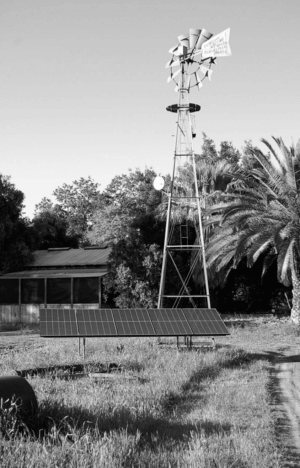
The windmill no longer pumps water. The tower supports a bat house and parabolic dish for internet connection. Photovoltaic panels in the foreground power a direct current pump in the well.
As noted in the previous chapter, I have two small wells. The first, with a depth of 200 feet, proved insufficient during a severe drought in the early 1990s, and so the second well was bored, with a depth of 340 feet. I purchased an old water-pumping windmill from about 1920 and set it up over the original well after the aquifer had recovered, with the idea of having an extra water source. But the pump—an ancient copper cylinder and a piston with leather washers—never worked properly. The windmill remains, however. It is an interesting artifact in its own right, and the tall steel tower supports a bat house, occupied by several dozen bats, as well as a parabolic dish that mediates our connection to the internet. I can climb to the top of the tower for a good aerial view of the farm. In the meantime, the well is back in use with a direct current pump (Grundfos SQF) powered by five solar panels (1,400 watts). This supplies water for furrow irrigation in the orchards when it is needed to supplement drip irrigation.
Water is moved around the farm in buried PVC pipe, amounting to about 2,800 lineal feet of lines. There are seventy-two risers with valves, so that almost no cultivated part of the farm is far from a convenient source of water. Most of the final stage of irrigation is with drip tubing or drip tape, amounting to about 26,000 lineal feet (five miles). Formerly there was no local recycling option for retired drip lines, but now there is a facility that will take it. Managing these lines and keeping them repaired is a daily task during the irrigation season (March to October).
Electricity
We are connected to the grid by a long spur that reaches our farm and a neighboring one. A transformer on a pole supplies us with electricity at 240 volts and 60 hertz. Three-phase power is not available. Although the utility company is required to offer three-phase power if there is a legitimate need for it, they don’t do it for free. The quote I got for a three-phase transformer was $34,000, to be followed by a monthly minimum charge of $200—an offer that I declined. The principal use of three-phase current would be for pumping water more efficiently and for operating my olive oil mill. I continue to use a less efficient single-phase pump for the water, and for the olive mill I installed a 25 kilowatt rotary phase converter to generate my own three-phase power.
We have a 3.5 kilowatt photovoltaic system on the roof of our house that is tied to the grid. This supplies about one-quarter of the electricity used on the farm. Another 1.4 kilowatts of photovoltaic panels off the grid power the direct current pump.
Recommended Reads
Recent Articles
Many know the effects of catnip on our feline friends, but few realize that catnip has medicinal effects for humans. From stomach aches to reducing fevers, catnip is a versatile herb with many benefits. The next time you grow this plant for your cat you may end up taking a few cuttings for yourself! The…
Read MoreIt’s time to take control of your seeds and become a plant breeder! Saving your seed allows you to grow and best traditional & regional varieties, and develop more of your own. The following excerpt is from Breed Your Own Vegetable Varieties by Carol Deppe. It has been adapted for the web. Becoming A Plant…
Read MoreTrying to figure out how to manage weeds in your garden beds? Use cover crops and living mulches for weed suppression while your garden flourishes! The following is an excerpt from The Ecological Farm by Helen Atthowe. It has been adapted for the web. Suppressing Weeds With Cover Crops: Getting Started Cover crops suppress weeds…
Read MoreInterested in becoming a mushroom farmer? Shiitake mushrooms are one of the easiest and most profitable places to start. The following is an excerpt from Farming the Woods by Steve Gabriel and Ken Mudge. It has been adapted for the web. (Photographs courtesy of Steve Gabriel and Ken Mudge unless otherwise noted.) The Stunning Shiitake…
Read MoreOne of the most essential parts of raising livestock is feeding your animals the right foods to keep them healthy and productive. Here are some tips for feeding animals on your farm to make it a bit easier! The following is an excerpt from Barefoot Biodynamics by Jeff Poppen. It has been adapted for the web.…
Read More

